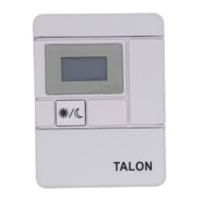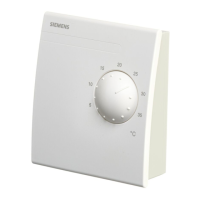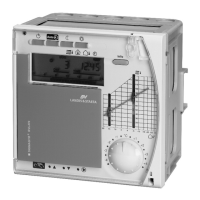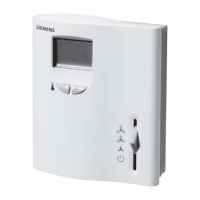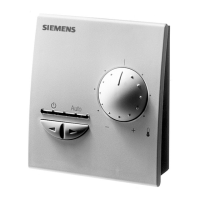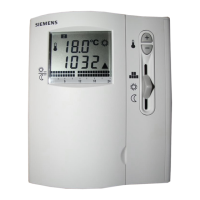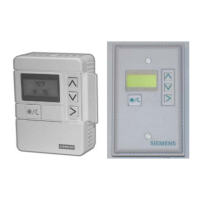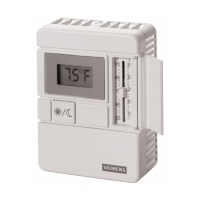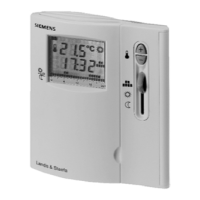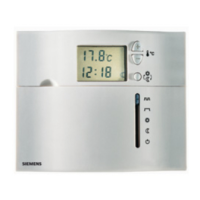Do you have a question about the Siemens Expert Series and is the answer not in the manual?
Explains the principles of current loop interface and TTY interface.
Details wiring for power supply, inputs, and outputs.
Shows connection examples for TTY and RS485/422 bus interfaces.
Illustrates a typical connection setup for the controller with a tempering unit.
Describes the controller's front panel layout, buttons, and LED indicators.
Explains the unit's state and mode after power is supplied.
Details how the controller interacts with tempering units and its input/output functions.
Explains specific functions for hot-runner systems.
Describes how to select the communication protocol for the interface.
Details how to configure pump output selection.
Explains changes in self-tuning behavior during start-up.
Covers menus for selecting digital inputs for tempering equipment.
Explains the parameter used to permit or deny self-tuning.
Provides important information for optimizing control loops with tempering units.
Explains the hexadecimal and BCD formats used for data transmission.
Details the byte-by-byte structure of the communication protocol.
Describes the telegrams sent by the master to the KS 50-1 TCont.
Details the reply telegrams sent by the KS 50-1 TCont to the master.
Explains how the controller handles and reports errors.
Describes the command for acknowledging and deleting pending STL alarms.
Outlines the inquiry telegram structure for hot-runner systems.
Explains the slave reply telegram for hot-runner systems.
Lists and describes the controller's input signals and their usage.
Details the resolution, decimal point, and other parameters for the process value input.
Provides ranges and accuracies for thermocouple types.
Lists ranges and accuracies for resistance transducers like Pt100.
Specifies input resistance, accuracy, and resolution for current/voltage signal inputs.
Details voltage and current specifications for the transmitter supply.
Surveys output types, including relay and universal configurations, and their uses.
Explains the different types of galvanic isolation present in the controller.
Covers AC/Universal supply specs and how configuration is stored during power loss.
Describes OUT3's functionality as a universal output and its configurations.
Describes PC connection for configuration using BlueControl software.
Details specifications for RS485/422 and TTY bus interfaces.
Lists the communication protocols supported by the controller.
Outlines protection modes, permissible temperatures, humidity, and mounting instructions.
Explains the principles of current loop interface and TTY interface.
Details wiring for power supply, inputs, and outputs.
Shows connection examples for TTY and RS485/422 bus interfaces.
Illustrates a typical connection setup for the controller with a tempering unit.
Describes the controller's front panel layout, buttons, and LED indicators.
Explains the unit's state and mode after power is supplied.
Details how the controller interacts with tempering units and its input/output functions.
Explains specific functions for hot-runner systems.
Describes how to select the communication protocol for the interface.
Details how to configure pump output selection.
Explains changes in self-tuning behavior during start-up.
Covers menus for selecting digital inputs for tempering equipment.
Explains the parameter used to permit or deny self-tuning.
Provides important information for optimizing control loops with tempering units.
Explains the hexadecimal and BCD formats used for data transmission.
Details the byte-by-byte structure of the communication protocol.
Describes the telegrams sent by the master to the KS 50-1 TCont.
Details the reply telegrams sent by the KS 50-1 TCont to the master.
Explains how the controller handles and reports errors.
Describes the command for acknowledging and deleting pending STL alarms.
Outlines the inquiry telegram structure for hot-runner systems.
Explains the slave reply telegram for hot-runner systems.
Lists and describes the controller's input signals and their usage.
Details the resolution, decimal point, and other parameters for the process value input.
Provides ranges and accuracies for thermocouple types.
Lists ranges and accuracies for resistance transducers like Pt100.
Specifies input resistance, accuracy, and resolution for current/voltage signal inputs.
Details voltage and current specifications for the transmitter supply.
Surveys output types, including relay and universal configurations, and their uses.
Explains the different types of galvanic isolation present in the controller.
Covers AC/Universal supply specs and how configuration is stored during power loss.
Describes OUT3's functionality as a universal output and its configurations.
Describes PC connection for configuration using BlueControl software.
Details specifications for RS485/422 and TTY bus interfaces.
Lists the communication protocols supported by the controller.
Outlines protection modes, permissible temperatures, humidity, and mounting instructions.
| Control Mode | PID |
|---|---|
| Input Type | Thermocouple, RTD, Analog |
| Output Type | Relay, Analog |
| Supply Voltage | 100-240 VAC, 24 VAC/VDC |
| Display | LED |
| Communication | RS485 |
